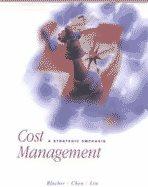Question
Case Study: Understanding Accounting Equations in Business Operations Introduction: Accounting equations serve as the foundation of financial reporting, providing a systematic framework for recording and
Case Study: Understanding Accounting Equations in Business Operations
Introduction: Accounting equations serve as the foundation of financial reporting, providing a systematic framework for recording and summarizing business transactions. This case study delves into the significance of accounting equations in the context of business operations, exploring how these equations facilitate accurate and comprehensive financial reporting.
Basic Accounting Equation: At the heart of accounting is the fundamental equation: Assets = Liabilities + Equity. This equation represents the core relationship between what a business owns (assets), what it owes (liabilities), and the residual interest of the owners (equity). Understanding this equation is paramount for maintaining the balance sheet, a critical financial statement that reflects an organization's financial position at a specific point in time.
Transaction Analysis and Double-Entry Accounting: Accounting equations play a pivotal role in transaction analysis, ensuring that every business transaction maintains the fundamental accounting equation's balance. Double-entry accounting, a system built on the accounting equation, dictates that every transaction has equal debits and credits. This systematic approach provides a checks-and-balances mechanism, minimizing errors and ensuring the accuracy of financial records.
Impact on Financial Statements: The accurate application of accounting equations has a direct impact on financial statements. The income statement, derived from changes in the equity section of the accounting equation, reflects the company's profitability over a specific period. The cash flow statement, closely tied to changes in assets and liabilities, provides insights into the organization's liquidity and cash management.
Application in Real-world Scenarios: Consider a scenario where a business takes out a loan to expand its operations. This transaction affects the accounting equation by increasing assets (cash from the loan) and liabilities (the loan amount). The equity section may also be impacted if part of the loan is used to purchase new equipment, affecting the overall financial position.
Question: In the accounting equation Assets = Liabilities + Equity, how would a business recording a loan taken for expansion affect the equation?
a) Increase in Assets, Decrease in Liabilities b) Increase in Assets, Increase in Liabilities c) Decrease in Assets, Increase in Liabilities d) Decrease in Assets, Decrease in Liabilities
Step by Step Solution
There are 3 Steps involved in it
Step: 1

Get Instant Access to Expert-Tailored Solutions
See step-by-step solutions with expert insights and AI powered tools for academic success
Step: 2

Step: 3

Ace Your Homework with AI
Get the answers you need in no time with our AI-driven, step-by-step assistance
Get Started


